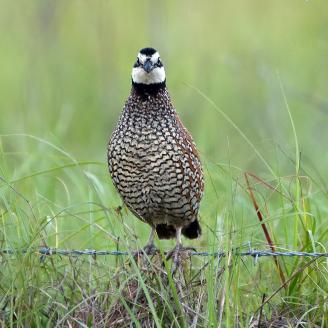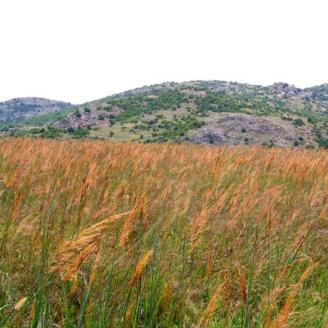EQIP CPAs, DIAs, and CEMAs
Learn about EQIP Conservation Planning Activities (CPAs), Design and Implementation Activities (DIAs), and Conservation Evaluation and Monitoring Activities (CEMAs).


The Environmental Quality Incentives Program (EQIP) is NRCS’ flagship conservation program that helps farmers, ranchers and forest landowners integrate conservation into working lands.
EQIP provides technical and financial assistance to agricultural producers and forest landowners to address natural resource concerns, such as:
NRCS works one-on-one with producers to develop a conservation plan that outlines conservation practices and activities to help solve on-farm resource issues. Producers implement practices and activities in their conservation plan that can lead to cleaner water and air, healthier soil and better wildlife habitat, all while improving their agricultural operations. EQIP helps producers make conservation work for them. Financial assistance for practices may be available through EQIP. Some producers may also qualify for advance payment.
Some of these benefits include:
NRCS offers technical assistance at no cost. Producers can use our personalized advice and information, based on the latest science and research, to make informed decisions about their land.
Technical Service Providers (TSP) can help producers plan, design and implement conservation practices or develop conservation activity plans to improve their agricultural operations. For more information on the Technical Service Provider program, visit the TSP page.
Technical assistance is also offered through our Conservation Technical Assistance (CTA) program.
Need a local Technical Service Provider? Visit the locate a TSP page.
The first step is to contact your local NRCS office. An NRCS conservation planner will schedule a visit to your property. They will walk the land with you to discuss your goals and review any resource concerns. Following the site visit, the conservation planner will develop a conservation plan that includes a variety of conservation practices or activities to address the resource concerns and management goals discussed.
Applications for NRCS conservation programs are accepted on a continuous basis; however, customers should apply by state-specific ranking dates to be considered for the current funding cycle.
To learn more about EQIP, contact your local NRCS office.
The application cutoff period for Kansas FY 2025 Farm Bill and IRA EQIP Act Now initiatives in Kansas is April 18, 2025.
Applications submitted prior to the cutoff will be planned, assessed, ranked, and submitted for potential funding in FY 2025. Applications will be processed in the order received, will be preapproved based on fund availability, and if a ranking score above the threshold level has been met. Threshold scores for ranking are in parentheses next to each ranking pool name.
Applications submitted by September 9, 2024 will be evaluated to be considered for funding in fiscal year 2025. Applications received after that date will be accepted and evaluated for future rounds of funding.
EQIP General Funding Pools and Ranking Criteria
Supporting Documents
Map: Sensitive Groundwater Areas (PDF; 440 KB)
Woody plant encroachment puts pressure on working rangelands by decreasing livestock production and increasing wildfire risk as well as harming grassland biodiversity and increasing threat to animal species living in this biome.

The intent of Advanced Soil Health Livestock Integration (ASHLI) is to assist innovative producers in achieving the “fifth principle” of soil health – livestock integration. This initiative will provide technical and financial assistance to install a watering source on cropland where livestock will be used to glean cover crops. Participants should be utilizing basic soil health principles by utilizing a diverse crop rotation, No-Till farming, and cover crops in their current operation, and intend on keeping 75-80% cover on the soil. This is a statewide initiative and an ACT NOW funding opportunity with a ranking threshold score needing to be 70 or higher to be considered for funding.

The monarch butterfly is one of the most iconic butterflies in North America and is known in part for its annual multi-generational migration from overwintering sites in central Mexico and coastal California to as far north as Canada. Multiple critical population stressors including the loss and degradation of habitat across the species' range have led to a significant decrease in the number of monarchs in the U.S. over the past few decades. NRCS is working with America's farmers, ranchers, and forest managers on voluntary conservation efforts to combat the decline of monarchs on private lands by establishing new habitat and managing existing habitat for monarchs and pollinators. This is a statewide initiative.

The northern bobwhite (Colinus virginianus) is often referred to as an “edge” species, seeking habitat where crop fields intersect with woodlands, pastures and old fields. Historically, land use favored bobwhite, but changes in land use and how lands are managed have caused the bird’s numbers to dip by more than 80 percent over the last 60 years. To help reverse bobwhite declines, NRCS is working with private landowners in 14 states to manage for high-quality early successional habitat. See the map below for areas in Kansas that are eligible for the NoBo Initiative. The minimum ranking threshold score will be 20 points.
In Fiscal Year 2023, NRCS has established numerous payment scenarios for ‘small scale’ agriculture operations. Instead of the large scale, conventional commodity crops that NRCS traditionally provide assistance, this funding pool is specifically set aside for farms in an urban setting and/or those growing non-traditional crops, including fruits & vegetables. This is a statewide initiative. The minimum ranking threshold score is 5 points.
Managing water resources in the American West can be challenging. Drought, aging infrastructure, and environmental requirements can strain existing resources. Through NRCS’s EQIP WaterSMART Initiative (WSI), we collaborate with the Bureau of Reclamation (BOR) to coordinate investments in priority areas for improving our cumulative impact in water conservation and drought resilience. The priority areas in Kansas are the Kirwin and Boswick irrigation districts.
Now in its eleventh year, the National Water Quality Initiative is a partnership among NRCS, state water quality agencies and the U.S. Environmental Protection Agency to identify and address impaired water bodies through voluntary conservation. NRCS provides targeted funding for financial and technical assistance in small watersheds most in need and where farmers can use conservation practices to make a difference. Conservation systems include practices that promote soil health, reduce erosion and lessen nutrient runoff, such as filter strips, cover crops, reduced tillage and manure management. These practices not only benefit natural resources but enhance agricultural productivity and profitability by improving soil health and optimizing the use of agricultural inputs. State water quality agencies and other partners contribute additional resources for watershed planning, implementation and outreach. They also provide resources for monitoring efforts that help track water quality improvements over time. The minimum ranking threshold score will be 70 points.

Best known for their dramatic courtship display, the bird depends on prairie and grassland ecosystems that have evolved under the interaction of fire and large herbivore grazing over the years. Primarily due to large-scale loss of habitat and fragmentation of habitat, their range distribution has been reduced by roughly 85 percent. About 95 percent of the lesser prairie chicken’s habitat is privately owned, making the land management decisions of producers pivotal to the bird’s success. Stewardship-minded producers are helping the at-risk bird and many other wildlife species by voluntarily improving the health of prairie and grassland ecosystems. The minimum ranking threshold score will be 5 points.

NRCS can help organic producers improve their operations or help producers transition to organic using a conservation plan tailored to their needs. Producers who are certified organic through the National Organic Program (NOP), are exempt from NOP, or are transition to organic, are eligible for this fund pool. Participants who are not certified or exempt from certification, agree to develop and work towards implementing an Organic System Plan to meet National Organic Program organic certification through USDA. This is a statewide initiative. The minimum ranking threshold score is 5 points.

IRA funding is to provide technical and financial assistance to operations that will address Soil Health and Grassland Health within the Environmental Quality Incentive Program. Financial Assistance will be provided for Climate Smart Mitigation Practices with associated practices that help facilitate the treatment of the targeted resource concerns for Soil and Grassland Health.

The minimum ranking threshold score will be 5 points.

The minimum ranking threshold score will be 20 points.
The Environmental Quality Incentives Program (EQIP) provides financial and technical assistance to agricultural producers and non-industrial forest managers.
Learn MoreThe Agriculture Improvement Act of 2018 (2018 Farm Bill) includes provisions that address socially disadvantaged, beginning, limited resource, and veteran farmers and ranchers (“historically underserved producers”).
Learn MoreThe 2018 Farm Bill was enacted on December 20, 2018. The Farm Bill continues its strong support for conservation efforts of America’s farmers and ranchers through reauthorization and expanded flexibility of NRCS conservation programs.
Learn MoreContact your local service center to start your application.
Do you farm or ranch and want to make improvements to the land that you own or lease?
Natural Resources Conservation Service offers technical and financial assistance to help farmers, ranchers and forest landowners.

To get started with NRCS, we recommend you stop by your local NRCS field office. We’ll discuss your vision for your land.
NRCS provides landowners with free technical assistance, or advice, for their land. Common technical assistance includes: resource assessment, practice design and resource monitoring. Your conservation planner will help you determine if financial assistance is right for you.
We’ll walk you through the application process. To get started on applying for financial assistance, we’ll work with you:
Once complete, we’ll work with you on the application, or CPA 1200.
Applications for most programs are accepted on a continuous basis, but they’re considered for funding in different ranking periods. Be sure to ask your local NRCS district conservationist about the deadline for the ranking period to ensure you turn in your application in time.
As part of the application process, we’ll check to see if you are eligible. To do this, you’ll need to bring:
If you don’t have a farm number, you can get one from USDA’s Farm Service Agency. Typically, the local FSA office is located in the same building as the local NRCS office. You only need a farm number if you’re interested in financial assistance.
NRCS will take a look at the applications and rank them according to local resource concerns, the amount of conservation benefits the work will provide and the needs of applicants. View Application Ranking Dates by State.
If you’re selected, you can choose whether to sign the contract for the work to be done.
Once you sign the contract, you’ll be provided standards and specifications for completing the practice or practices, and then you will have a specified amount of time to implement. Once the work is implemented and inspected, you’ll be paid the rate of compensation for the work if it meets NRCS standards and specifications.